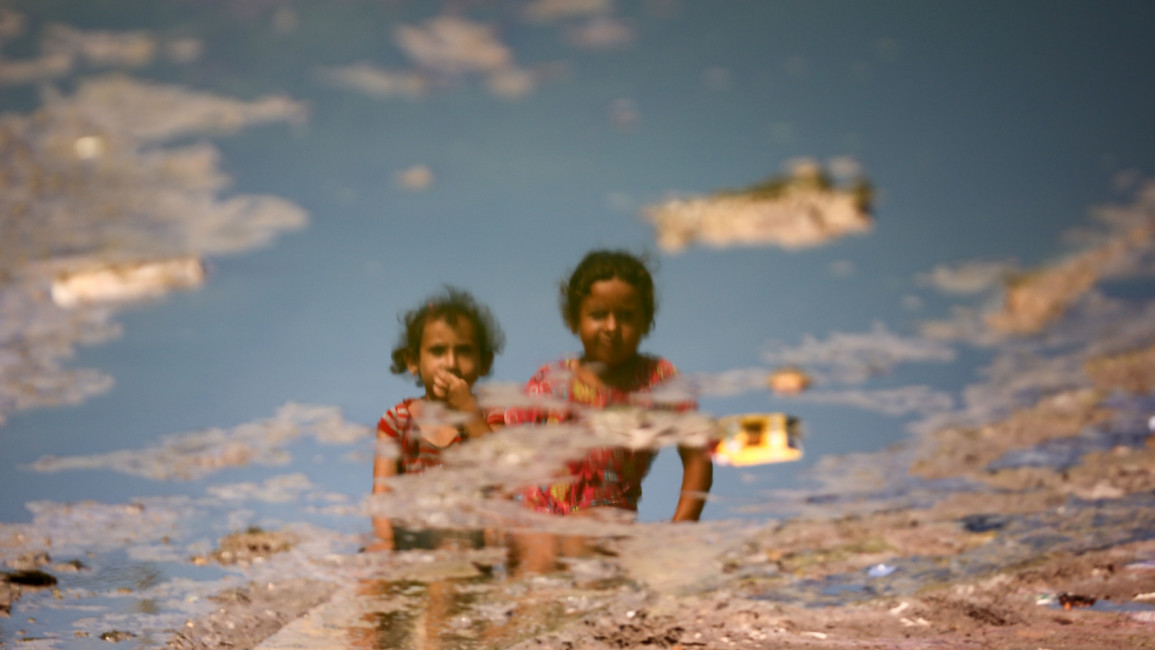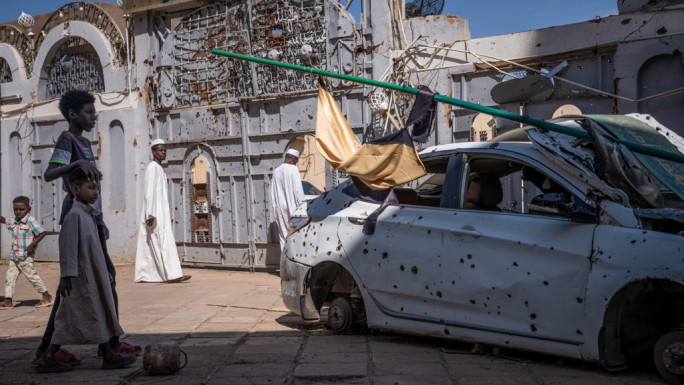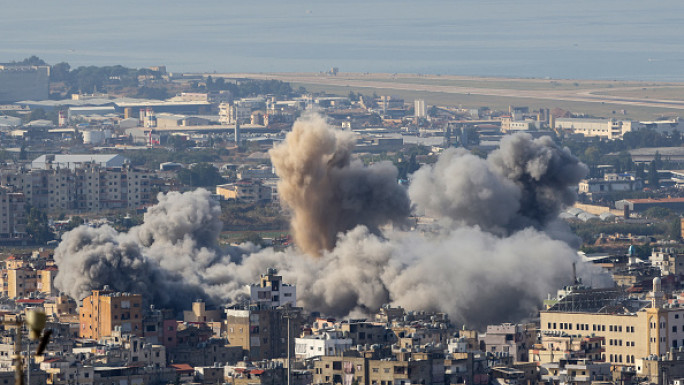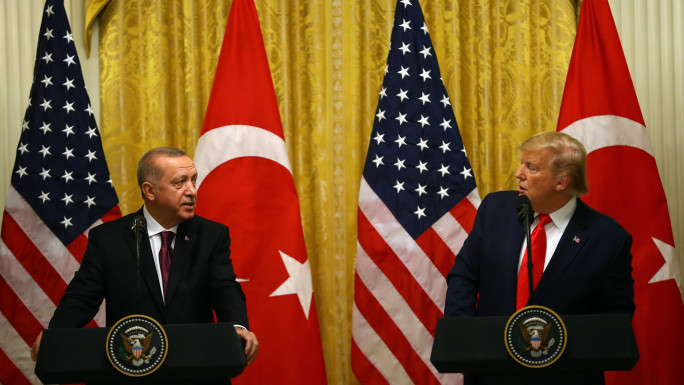
Polio: Israel's dirty bioweapon is bringing Gaza to its knees
In the break room of the Dunn School of Pathology at the University of Oxford sits a bookcase filled with ceramic replicas of bedpans.
The bed pans are a homage to the work carried out by Howard Florey, Ernst Chain, and their colleagues in the 1940s at the department making penicillin and demonstrating its efficacy in fighting bacterial infections.
They used bedpans as enormous flasks to culture the Penicillium notatum mould. When I was a PhD student in the department, I used to gaze on the simple, beige vessels and sense the gravity of the research being carried out by my colleagues.
While I was, admittedly, a bit of a dilettante by comparison, I spent my days surrounded by scientists committed to one of the highest human callings: the prevention and treatment of disease. Perhaps no achievement in human history shows our promise than the global eradication of the smallpox virus in the 1980s.
For years, the poliovirus was the target of a similar eradication campaign that was slowly closing in on success. Now, Israel threatens to undo much of this work through its terrorisation of the Palestinian people.
Poliomyelitis has been detected in sewage samples in Gaza, and Gaza’s Ministry of Health has declared a polio epidemic. Highly infectious, the usual transmission pathway is a faecal-oral route, but the disease can spread through a common vehicle like the contaminated water that has been widely reported on in Gaza.
Once ingested, poliovirus replicates in the intestine, from which the virus can spread to the blood, other tissues such as fat and muscle, and crucially, in rare cases, the central nervous system.
In about 1% of cases, the poliovirus causes death of nerve cells, resulting in either paralysis or death. While there are currently no reports of paralytic polio, the breakdown of Gaza’s healthcare system and the sheer number and variety of injuries and diseases occurring make detection difficult. There is no cure for polio infection, only prevention through vaccination.
The particular poliovirus detected in Gaza is not a wild strain, but a vaccine-derived poliovirus. When vaccination is performed using a weakened live virus, the vaccinated individual can still shed the virus for weeks. High levels of vaccination within the population usually prevent this shedding from resulting in transmission. Prior to October 7, polio vaccination rates in Gaza were over 95%; now it is likely the rate is below 89%, allowing the spread of the vaccine-derived virus.
Against the backdrop of this emerging crisis, it has been reported that Israel destroyed over 30 water wells in Gaza in the month of July. At the end of the month, Israeli troops filmed themselves blowing up the reservoir of the Tel al-Sultan neighbourhood of Rafah and posted it to social media, “in honour of Shabbat.”
A dirty weapon of war
On July 18, Oxfam issued a report entitled Water War Crimes, which outlines what they say has been the systematic weaponisation of water against Palestinians.
The report details the complete destruction of wastewater treatment plants and the destruction of 70% of sewage pumps; the damage or destruction of five water and sanitation infrastructure sites every three days; the reduction of water production capacity by 84%; and the reduction of water supply from Mekorot lines by 78%.
This campaign of destruction against water infrastructure has resulted in “unavoidable immediate and long-term health threats.” Health experts and humanitarian organisations began ringing alarm bells as soon as Israel announced a total blockade just two days after October 7 banning electricity, food, gas, and water.
Pestilence follows war like a dog after scraps. It crops up opportunistically in foxholes and craters, waiting to pick off those who survive the bombs and bullets.
Yet it is time we considered that the spread of disease in Gaza is not an unfortunate byproduct of Israel’s aggression, but a considered policy choice. Israeli brass have already floated the idea. In November 2023, a retired Israeli general stated that the spread of deadly diseases in Gaza, “will bring victory closer."
While some have devoted themselves to using science to fight human disease, others have tried to harness its destructive power. Humans appear to have attempted to use disease as a weapon of war for millennia.
Holy Roman Emperor Barbarossa threw human corpses into wells during his conquest of Italy in 1155 — for the Israeli parallel, search for Operation Cast Thy Bread. There is some evidence that the Mongols launched the bodies of plague victims over city walls in their siege of the city of Caffa in the 1340s, with devastating consequences for the Genoese.
Most analogous to the situation in Gaza, however, is Napoleon’s use of contaminated water to spread disease among enemy troops.
Twice in his military exploits, once in the siege of Mantua (1976) and again at Walcheren (1809), Napoleon used the breaking dams and dykes to cause flooding around his enemies and spread disease from the brackish waters. At Walcheren, he is quoted as having said, “We must oppose the English with nothing but fever, which will soon devour them all.”
Soon enough, “Walcheren Fever,” likely a heady mix of malaria, typhus, typhoid, and dysentery, infected 40% of the British troops on the island, killing nearly 4,000 men, and cementing Walcheren as an unmitigated disaster for the Brits.
Gaza risks life and limb
With the advent of germ theory and the arms races stoked by the wars of the early 20th century, many nations formed designated biological weapons programmes.
However, after the horrors of the First World War, the Geneva Protocol in 1925 was signed as a general prohibition on chemical and biological weapons.
It was built upon with the Biological Weapons Convention in 1992 and the Chemical Weapons Convention in 1993.
Ironically, none of these treaties seem capable of contending with the Napoleon scenario (i.e. the Gaza situation), in which a sieging army promotes the spread of an endemic virus. Israel is not even a signatory of the Biological Weapons Convention.
As a student of disease, it is intolerable to me that the progress of polio eradication could be undone with no consequences. There may be, however, a mechanism in international law for holding Israel to account.
The concerted attack on Palestine’s water infrastructure would appear to violate several articles of the International Law Association’s Resolution on the Protection of Water Resources and Water Installations in Times of Armed Conflict in 1976. This is customary international law, which binds all states, including Israel.
Article III prohibits the diversion of waters for military purposes, “when it would cause disproportionate suffering to the civilian population or substantial damage to the ecological balance of the area concerned.” Article V makes similar prohibitions on the causing of floods that damage the ecological balance, while Article VI prohibits the “seizure, destruction of intentional damage to water installations […] vital to the health and survival of the civilian population.”
In the meantime, occupying forces announced the launch of a polio vaccination campaign for soldiers in Gaza on July 21. Naturally, this campaign does not extend to civilians in Gaza.
They will have to rely on the World Health Organisation (WHO), which announced they will be sending over a million polio vaccines. In short course, Musa Abed, the Director of Health Care at the Palestinian Health Ministry, announced Israel was not allowing entry of the vaccines into Gaza.
Until the vaccines are allowed in, Israel’s newest weapon of war will continue to spread with unknown consequences for the broader region if it spills over. Polio, a disease once on the verge of global eradication, will be allowed to infect the children of Gaza, stealing use of the limbs the bombs spare.
Alex Foley is an educator and painter living in Brighton, UK. They have a research background in molecular biology of health and disease. They currently work on preserving fragile digital materials related to mass death atrocities in the MENA region.
Follow them on X: @foleywoley
Have questions or comments? Email us at: editorial-english@newarab.com
Opinions expressed in this article remain those of the author and do not necessarily represent those of The New Arab, its editorial board or staff.







 Follow the Middle East's top stories in English at The New Arab on Google News
Follow the Middle East's top stories in English at The New Arab on Google News


